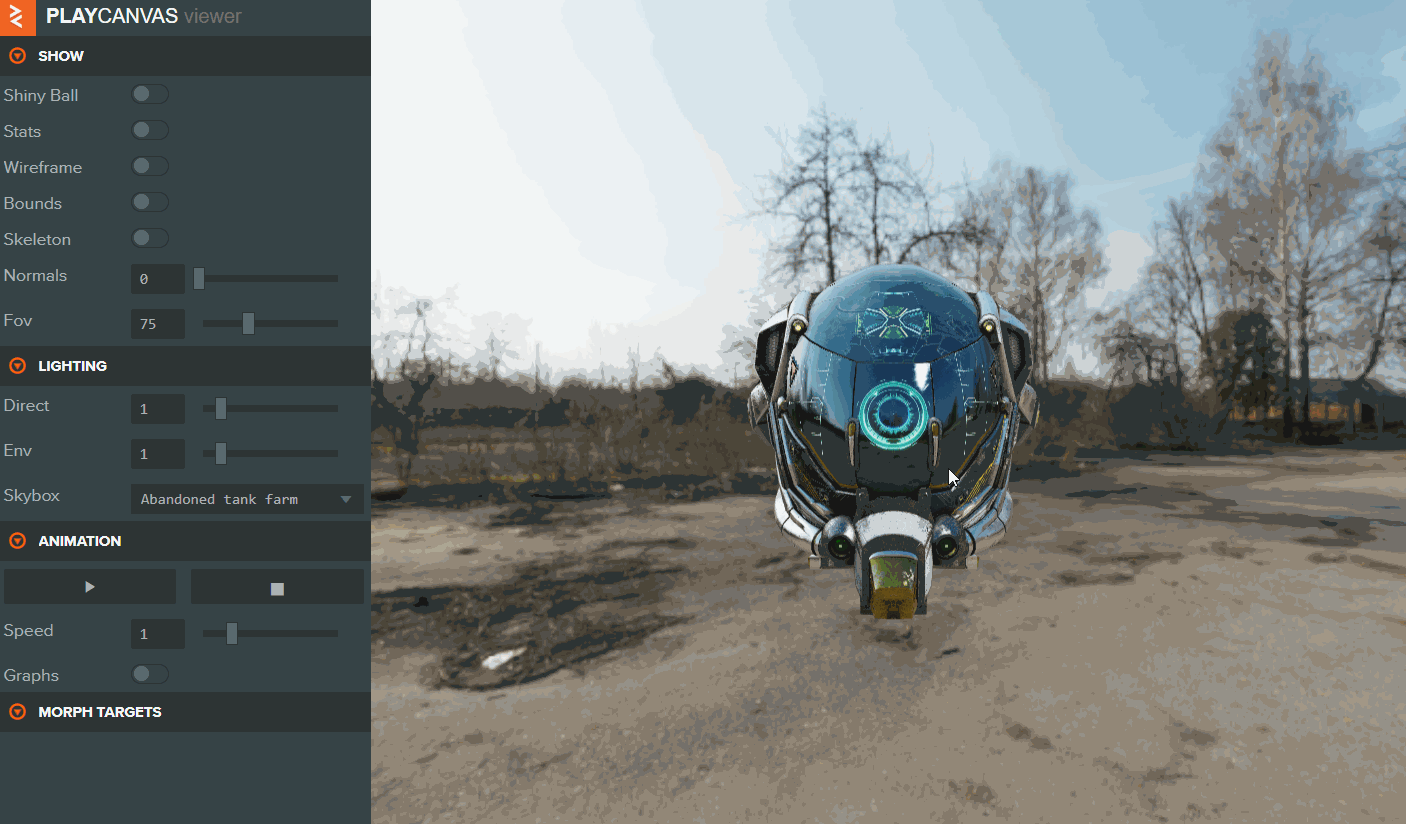PlayCanvas launches glTF 2.0 Viewer Tool
Today, the PlayCanvas team is excited to announce the release of a brand new browser-based glTF viewer application.

Try it now: https://playcanvas.com/viewer
Or click these links to preload some classic glTF models: Boom Box, Damaged Helmet and Fox.
The viewer is open sourced under an MIT license and the code can be found on GitHub.
Fork it now: https://github.com/playcanvas/playcanvas-viewer
The viewer allows you to drag-and-drop any glTF 2.0 file and inspect it in detail. We challenge you to find one that doesn't work! The viewer has the following features:
- Visualize wireframe, skeleton, bounds and normals
- Adjust scene lighting and skybox
- Drag and drop equirectagular images (including HDR files) or six cubemap face images.
- See how a model performs on both the CPU and GPU via the viewer's real-time metrics panel
- Play animations (including skinned and morphed meshes) - unlimited morph targets are supported
- Visualize animation curves in real-time as graphs in the 3D view
- Load models via drag-and-drop or by passing a URL query parameter
- Support for Draco mesh compression
The release of the PlayCanvas Viewer coincides with the engine reaching 100% glTF 2.0 spec compliance! PlayCanvas passes every single core test in cx20's glTF Test suite. We are now turning our attention to supporting the full range of glTF 2.0 extensions. The engine already supports:
KHR_materials_pbrSpecularGlossinessKHR_materials_unlit
The engine itself can parse and render glTF 2.0 files incredibly quickly. You can expect glTF parse time to be approximately one tenth of that loading the equivalent JSON model.
Give it a try today - you'll be impressed!
